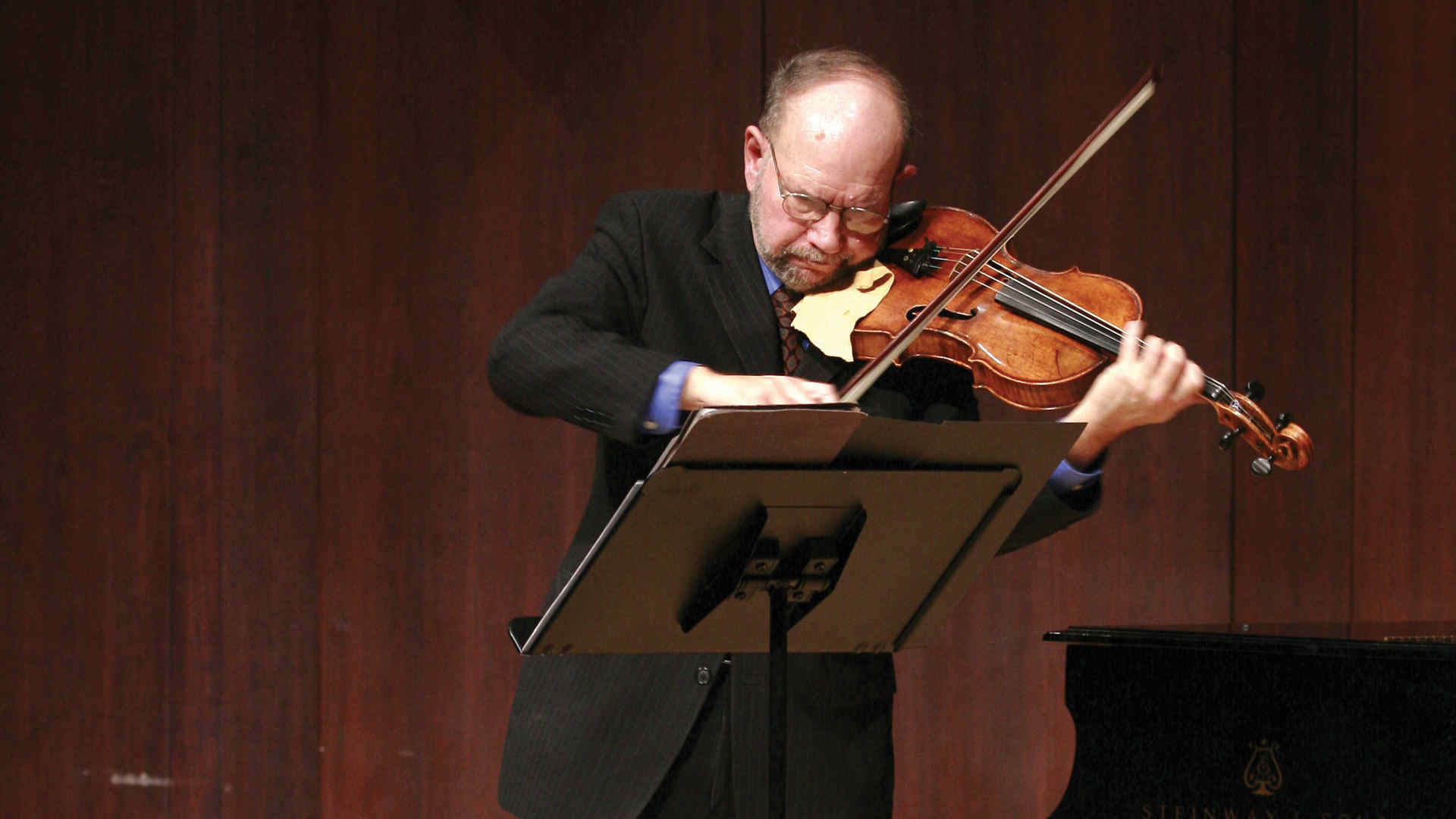
Saidenberg Faculty Recital Series Features Samuel Rhodes
The prospect of a brand-new work for viola and piano by a major composer is sure to produce an exciting rush of adrenaline in any violist. It certainly did for me when Sally Chisholm, the longtime violist of the Pro-Arte String Quartet and a good friend, proposed the idea of commissioning John Harbison to compose a sonata for her and a group of prominent violists from many different locations around the U.S. The plan was brought to reality through the generosity of an anonymous donor, a longtime friend of Harbison who wanted to honor the composer’s 80th birthday.
One of our most distinguished American composers, Harbison has written works for almost every kind of large, small, vocal, and instrumental combination. His The Great Gatsby premiered at the Metropolitan Opera in 1999 to great acclaim. He is a violist and has written a solo sonata, two books of études, and a concerto for our instrument. Nicholas Cords (’94, viola) gave the work its New York premiere, in 1994, as the winner of Juilliard’s viola concerto competition.
Harbison’s Viola and Piano Sonata had its world premiere in February at the University of Wisconsin, Madison, by Chisholm and pianist Timothy Lovelace. I have the privilege of giving the New York premiere, at Juilliard on March 19, with my colleague Robert McDonald (MM ’79, piano). The work, which consists of six brief contrasting character movements, is beautifully written for both instruments and is an important addition to our repertoire.
To complement the Harbison, I had the idea of building a program around it that would feature works one would not normally encounter in a viola recital. I will begin with the first of two trios for two violas and cello by Johann Nepomuk Hummel (1778-1837), a prolific composer and a virtuoso pianist who in his youth not only studied with Mozart but also lived with him and his family for three years. One can easily hear in this trio how Mozart influenced him both in sound and craftsmanship. The work also features a nostalgic harmonic feeling of the early Romantic style. I am honored to have as collaborators for the Hummel my colleagues Misha Amory (MM ’92), the violist of the Brentano String Quartet, and Joel Krosnick, my longtime colleague in the Juilliard Quartet.
For the finale, I’m planning a work that has fascinated me for a long time. Although Mozart blessed us with one of the great works of music, his Sinfonia Concertante for violin and viola, he never composed a solo viola concerto. Many viola concertos from the classical period do exist, but there are none of the quality of the Mozart violin concertos or the Haydn cello concertos. There is, however, a Divertimento by Mozart for strings and two horns, K. 334, that I have long thought wonderfully suitable to be transcribed for viola and piano. The Divertimento features a virtuoso first violin part along with extremely vital contributions from the other instruments in the ensemble. The original Divertimento has six movements. I have transcribed four of them to make the work resemble the pattern of a normal Classical sonata. Although much of the time, the viola plays the original first violin part, there are sections where it plays both horn parts together and occasionally one of the other string parts. My dream is that with this addition to the repertoire, violists young and old will have the opportunity to work to master the Classical concertante style from its greatest exponent, Wolfgang Mozart!
Samuel Rhodes, who’s the chair of the viola department, was the violist for the Juilliard String Quartet from 1969 to 2013